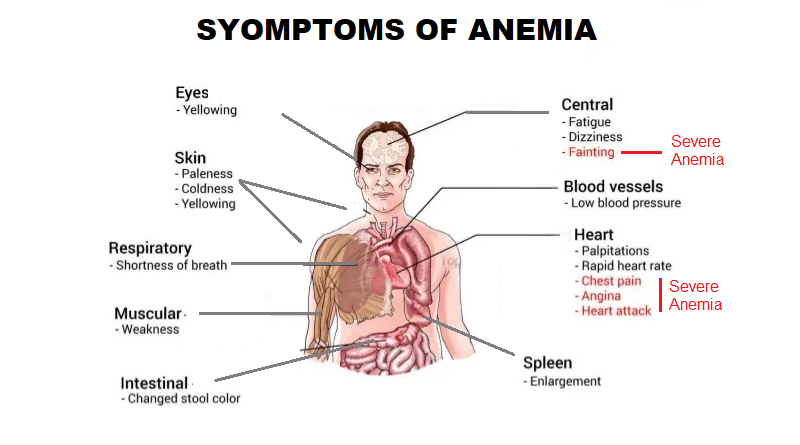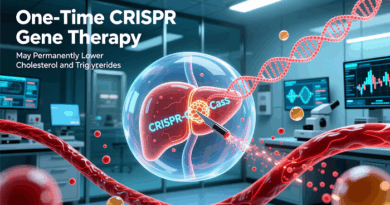Anemia: Causes, Symptoms, and Management
Anemia, a condition commonly heard of but often misunderstood, affects millions of people worldwide. Despite its prevalence, many individuals remain unaware of the silent battle that unfolds within their own bodies. In this article, we will delve into the world of anemia, exploring its causes, symptoms, and available treatments. And a deeper understanding of this often-overlooked condition and discover the steps you can take toward a healthier life.
The Essence of Anemia: Definition
Let’s start by understanding what truly anemia is. It is a medical condition characterized by a deficiency of healthy red blood cells or hemoglobin in the blood. Hemoglobin, the protein responsible for carrying oxygen to various tissues and organs, is essential for maintaining bodily functions and overall vitality.
The normal values for red blood cells and hemoglobin depend on factors such as age, gender, and altitude. However, generally normal ranges are as follows:
- Red Blood Cells (RBC): The RBC count in adult males is typically between 4.5 and 5.5 million cells per microliter (mcL), while in adult females, it is usually between 4.0 and 5.0 million cells/mcL.
- Hemoglobin (Hb): In adult males, the normal range for hemoglobin is usually between 13.5 and 17.5 grams per deciliter (g/dL), while in adult females, it is between 12.0 and 15.5 g/dL.
Unveiling the Causes of Anemia
Anemia can result from various underlying causes, each requiring different approaches for effective treatment. The most common causes include:
- Iron Deficiency Anemia:
- Inadequate iron intake
- Poor iron absorption
- Increased iron demand (e.g., during pregnancy)
- Vitamin Deficiency Anemia:
- Insufficient intake of vitamin B12 or folate
- Impaired absorption due to certain medical conditions
- Chronic Disease Anemia:
- Occurring as a result of chronic conditions such as kidney disease, cancer, or autoimmune disorders
- Hemolytic Anemia:
- Destruction of red blood cells due to genetic conditions, infections, medications, or autoimmune disorders
Symptoms: Anemia’s Warning Signs
While anemia may lurk silently within, it does leave behind some clues for us to decipher. Common symptoms include:
- Fatigue and Weakness:
- A constant feeling of tiredness and a lack of energy
- Pale Complexion:
- Noticeable paleness, particularly in the face, nails, and inside the lower eyelids
- Shortness of Breath:
- Difficulty breathing, even during mild physical activity
- Rapid Heartbeat:
- An increased heart rate or palpitations
- Dizziness and Headaches:
- Frequent lightheadedness or headaches
Diagnostic Tools
To determine the presence of anemia and its underlying cause, healthcare professionals employ various diagnostic tests, including:
- Complete Blood Count (CBC):
- Measures the number, size, and shape of red blood cells
- Iron Studies:
- Assesses iron levels in the blood, including serum ferritin and transferrin saturation
- Vitamin and Folate Levels:
- Measures the levels of vitamin B12, folate, and other essential nutrients
- Bone Marrow Biopsy:
- Occasionally performed to evaluate specific types of anemia
Treatment and Management
The approach to treating anemia depends on its cause and severity. Some common treatment options include:
- Dietary Changes:
- Consuming iron-rich foods such as lean meats, leafy greens, and legumes
- Iron and Vitamin Supplements:
- Prescribed to replenish deficiencies and stimulate red blood cell production
- Blood Transfusions:
- Administered in severe cases to rapidly boost red blood cell count
- Addressing Underlying Conditions:
- Treating the root cause, such as chronic kidney disease or autoimmune disorders
Prevention
Preventing anemia involves adopting a proactive approach toward nutrition and overall well-being. Some key preventive measures include:
- Balanced Diet:
- Incorporating iron-rich foods, leafy greens, and fruits in daily meals
- Prenatal Care:
- Ensuring proper nutrition during pregnancy to prevent iron deficiency anemia
- Regular Check-ups:
- Monitoring blood levels and overall health to detect and address deficiencies early
Summary:
Anemia is a widespread condition, but its impact can be profound, affecting both physical and mental well-being. By understanding the causes, symptoms, and available treatments, we can empower ourselves to take proactive steps toward preventing and managing anemia. This article explores the world of anemia, shedding light on its definition, causes, symptoms, and available treatments. It emphasizes the importance of recognizing the warning signs of anemia and provides insights into diagnostic tools used for its identification. The article also highlights various treatment options and preventive measures individuals can adopt to lead healthier lives.
If you suspect that you may have contracted one of these conditions, Helalmedical offers quick, private, and convenient testing options.
Visit our Facebook page.




